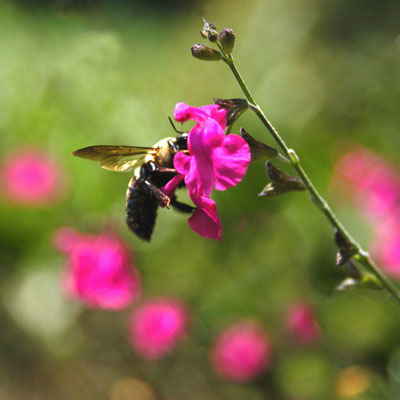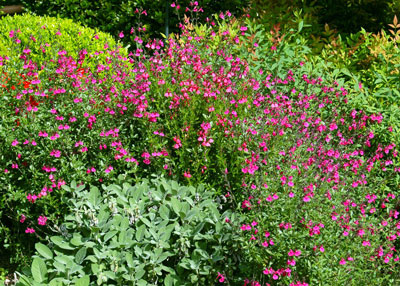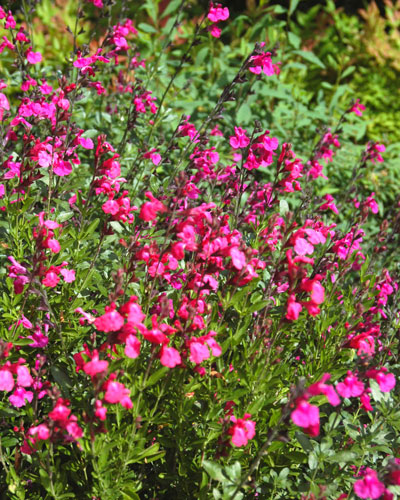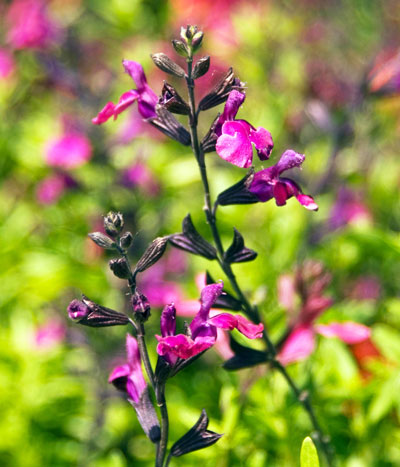Autumn sage (Salvia greggii)
This plant has a little to offer to every kind of gardener in Texas. Just take a look at its features.
• Native Texas plant from the Hill Country and Southwest Texas;
• Perennial;
• Blooms almost all season long, unlike most other perennials;
• Bees, butterflies and hummingbirds love it;
• Xeriphytic, which means it’s drought-tolerant;
• Virtually trouble-free;
• Comes in a variety of flower colors, mostly reds, but also pink, purple, white and two-toned.


To be successful in growing it…
• Full or nearly full sun;
• Well-prepared garden soil – it needn’t be perfect, but rake out the roots, rocks and building debris and add in organic matter;
• Ensure good drainage;
• Buy color(s) that will blend with other plants around it;
• Space plants 18 to 24 inches apart;
• Little trimming will be needed first year;
• Beginning second year, trim plants back by one-half in early February each year and by one-third in early August. (That basically parallels timing and amounts given for bush roses.)
• Apply high-N or even all-N fertilizer to keep plants vigorous.
• Properly tended, plants should last for many years and never have to be dug or replaced. This is one perennial you won’t have to dig and divide.


